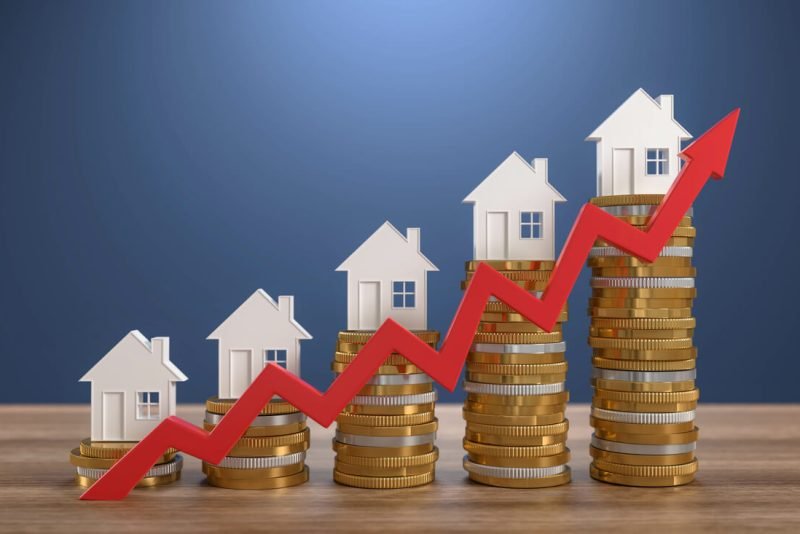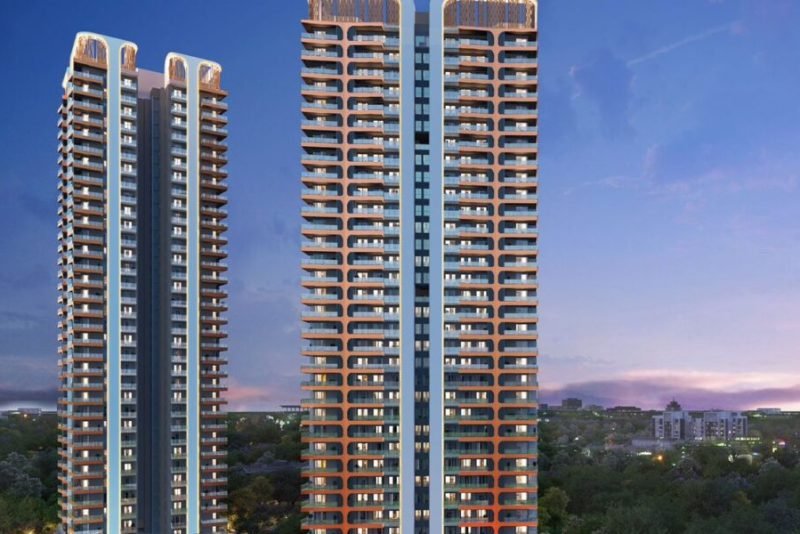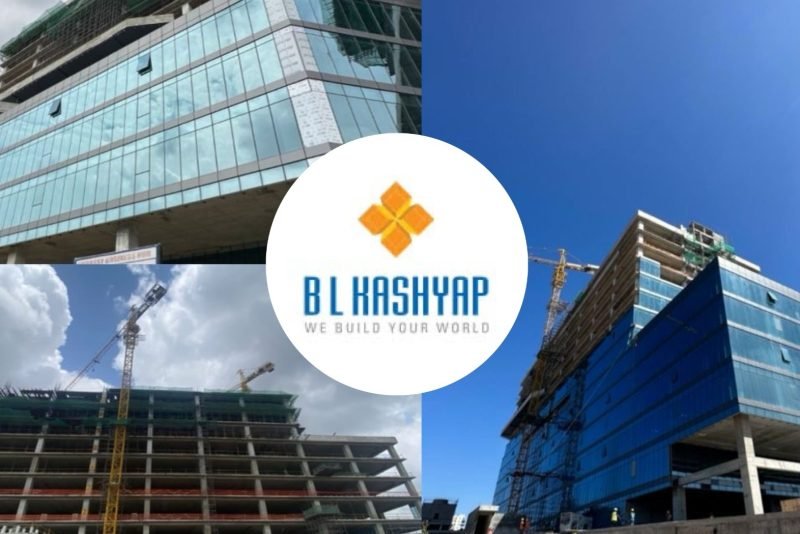Gurugram’s luxury housing is booming, but experts warn of a potential 2–4 year supply overhang if investors exit. Prices may stabilise in the coming quarters.
With over 28 luxury projects launched in Haryana’s Gurugram in the first quarter of 2025 alone, each commanding higher prices and some being declared ‘all sold out’ soon after launch, concerns about a potential housing bubble are mounting. With rates touching ₹18,000 per sq ft in some micro-markets, questions around the sustainability of this rapid price escalation are inevitable.
Some real estate experts believe that continued investor activity in Gurugram’s premium housing segment could push prices to unsustainable levels. If this trend persists, a supply overhang may emerge in the next 2–4 years as early investors look to exit, potentially straining the resale market. They note that the next 12–18 months will be crucial in determining whether the current growth cycle holds or gives way to a course correction.
While concerns of a crash are largely dismissed, given that less than 5% of bookings in FY24 were cancelled or transferred, indicating low speculation, experts also point out that today’s investors are typically not short-term flippers. That said, a sharp correction is seen as unlikely, though prices in the luxury segment are expected to stabilise across Gurugram in the coming quarters, say some experts.
One social media influencer had earlier likened the market to a ‘house of cards’ on the verge of collapse, citing red flags such as the ongoing liquidity crunch, speculative trading, and the surge in investor-driven demand. According to the influencer, traders’ entry since 2021 has fueled ‘dangerous speculation’ rather than genuine end-user demand. Property prices in Gurugram, he noted, have tripled in just three years, far outpacing rental yields and long-term value indicators.
Brokers push back
Market insiders, however, aren’t buying the doomsday narrative. Gaurav Gupta of Zeno Realty, a broking firm led by a former investment banker, dismissed the alarm as overblown. “Sure, there are traders, and yes, some Tier 2 and Tier 3 builders may be overreaching. But to paint the entire market with the same brush is unfair,” he wrote on X. “Gurgaon has far more legs than some perma-bears are willing to admit. Maybe what stings is that another city is stealing the spotlight this real estate cycle.”
Netizens weigh in
Online discussions, especially on platforms like Reddit, reveal rising unease among prospective buyers. Some argued that investor-driven price inflation has outpaced actual demand, warning that the market may soon run out of buyers. “The primary market caters mostly to traders who buy with down payments, hike prices by 10-15%, and pass it on. Now, there are no more takers. The house of cards might fall,” one user claimed.
Others pushed back against the pessimism. “Property prices in India don’t fall unless there’s a full-blown economic collapse,” one Redditor said. “Even in 2008 and during COVID, real estate didn’t crash. For prices to drop, you need desperate sellers and no buyers, which only happens in a crisis.”
Will Gurugram’s real estate market mirror the 2008 ‘bubble’?
A report by Anarock reveals that NCR saw a steep 27% year-on-year rise in average residential prices in Q1 2025, driven by a surge in luxury and ultra-luxury housing (priced above ₹1.5 crore). In Q2 2025, these segments accounted for 82% of all new supply, 42% luxury and 40% ultra-luxury, totalling around 18,760 units. Notably, there were no new launches in the affordable segment (below ₹40 lakh), pushing average prices further up. Despite the price growth, housing sales dipped 14% year-on-year.
Anuj Puri, chairman of Anarock Group, also flagged concerns over increasing investor activity reminiscent of the early 2000s. “If demand weakens or liquidity tightens, the risk of a bubble cannot be ruled out. Sustainable growth will depend on real end-user demand, affordability, and timely supply,” he said.
According to Col Sanjeev Govila (retd), certified financial planner and CEO, Hum Fauji Initiatives, a financial advisory firm, the real estate market of 2008 experienced a long, painful slump that lasted for about 15 years before it showed substantial gains.
He said that buyers who entered projects between 2021 and 2024 have seen significant price appreciation in a relatively short period, thanks to rapid infrastructure development and demand. The quantum of the price jump in such areas has been much higher than during previous cycles, offering substantial gains.
Rahul Purohit, co-founder and CBO at Square Yards (New Homes, India), points out that the post-COVID bull run in NCR created a frenzy of buying unseen since 2013. The cycle saw both end-users and investors rushing in, with some securing 25% returns by exiting midway through project development.
“Projects in Gurugram’s Sector 61 that launched at ₹8,000 per sq ft in 2021 have now touched ₹16,000, a 100% increase in just four years. You don’t see this level of appreciation in mature markets like Mumbai,” says Purohit.
What is a real estate ‘bubble,’ and is today’s situation different from 2008?
While prices have risen sharply over the past two years in Gurugram, a bubble hasn’t formed yet. However, real estate experts say one could emerge if price hikes and new launches, especially in the luxury segment, continue unchecked.
A real estate bubble occurs when property prices surge rapidly and exceed their actual value, often driven by speculative investor demand. Buyers in such markets typically seek quick profits rather than long-term growth. The bubble bursts when prices become too expensive for buyers, leading to a fall in demand and potential inventory pile-up if developers fail to adjust.
That said, today’s real estate market is very different from 2008. It is more mature, regulated, and transparent, thanks largely to RERA. Back then, the market was unorganised, with many small developers rushing to cash in on the boom, say experts.
A classic example of a real estate bubble is the US crisis of the 2000s. Home prices soared until 2006, then collapsed, triggering the 2007–2009 financial crisis, causing mass foreclosures and a severe recession. However, such a scenario is unlikely in India. The US bubble was fueled by aggressive, unchecked lending. In contrast, Indian home loans require higher down payments and are less exposed to subprime risks. Even if a bubble were to deflate here, prices would likely stagnate or correct gradually, not crash overnight, they said.
Signature Global chairman Pradeep Kumar Aggarwal dismissed crash concerns, noting that less than 5% of bookings in FY24 were cancelled or transferred, an indicator of low speculation.
“The current investor is not a short-term flipper. These are long-haul players. The buyer mix is around 60:40 between investors and end-users,” he said. For example, an under-construction ₹4 crore unit requires a ₹1 crore upfront payment plus GST, making bulk investment a high-commitment play.
Aggarwal also pointed to rising home loan usage, especially among upgraders selling Delhi properties to move to Gurugram, often financing up to 50% of their new homes.
He further noted that construction costs have surged to ₹12,000 per sq ft, while land costs have also jumped. Yet, under-construction homes priced at ₹18,000 per sq ft remain attractive compared to ₹22,000 for ready units in the same area, driving demand among value-conscious end-users.
What’s really happening on the ground?
In the last couple of years, several residential projects across top Indian cities have been declared ‘100% sold out’ soon after launch. In most cases, ‘sold out’ means all units have been subscribed, not necessarily fully paid for, explains Manish Aggarwal, senior managing director (North & East), India, JLL.
Typically, buyers pay 10% at the time of booking, and another 30% within three months. By the time the 30% threshold is met, particularly for high-end properties priced at ₹5 crore, developers are confident the buyer will not back out soon, having already committed ₹1.5 crore. In the past, investors would often exit within this window, flipping units for 10–15% gains but that trend is fading, he said.
But that trend is gradually slowing due to the high cost of these housing units, not to mention the booking cost, which in some cases is as high as ₹50 lakh, say experts.
Purohit says that the quick arbitrage game is fading. “Today’s investor is more long-term, expecting returns just above equity markets. They’re comfortable putting in 40% upfront and holding for 3–4 years. With capital costs and interest factored in, the focus has shifted to long-term gains over short-term flips.”
Flipping properties getting tougher?
The average ticket size in the premium segment has jumped from ₹2.5 crore to ₹4 crore or more. The capital commitment required within three months has also increased to ₹4.5 crore or higher, dampening short-term investor enthusiasm. The old ‘flip-and-exit’ model has become riskier and less rewarding. Investors who once spread ₹10 crore across units now need upwards of ₹25 crore for similar exposure, with no guaranteed short-term returns. Many are pivoting to land and alternative asset classes, explains Manish Aggarwal.
“The market is no longer as liquid as the stock market; flipping properties is only viable when appreciation is sharp and fast,” explains Col Govila.
Who is investing?
Besides ‘traders’, even senior salaried professionals are joining the luxury housing rush, hoping to cash in on fast appreciation. Some report doubling their investments in a year after investing ₹1 crore. However, as prices cross ₹23,000 per sq ft, the risks are increasing. These salaried buyers lack the financial cushion of seasoned investors and may not be able to withstand a slowdown, experts say.
NRI interest has also surged: In projects by reputed developers known for timely delivery, NRIs account for up to 30% of buyers. Unlike short-term investors, NRIs typically invest for rental yield, long-term use, or to meet future family needs.
Tier 2 buyers: Gurugram is also witnessing capital inflows from regions like Punjab, Haryana, Himachal Pradesh, Bihar, and Rajasthan. Buyers from these states often own multiple properties, one as a home and another as a long-term family asset.
Upgraders: Gurugram also attracts upgraders from West Delhi and South Delhi. The luxury buyer is no longer just a high-net-worth investor. “There are salaried professionals earning ₹60–75 lakh annually, putting down ₹80 lakh and financing the rest. Bonus payouts or selling ancestral property helps bridge the affordability gap,” says Rahul Purohit, co-founder and CBO at Square Yards (New Homes, India).
Going forward, price growth may stabilise, say experts
According to Puri, while a sharp price correction is unlikely, residential property prices, especially in luxury segments, are expected to stabilize in the coming quarters across Gurugram and other top cities.
“In the last two years, we saw a spike in luxury launches by Grade A developers in Gurugram due to a previous supply gap. But with prices rising steeply, even investors, who form the bulk of luxury homebuyers, are becoming more cautious,” he said.
This has led to a growing inventory of unsold luxury homes in the city. ANAROCK Research shows nearly 14,000 unsold luxury units in Gurugram at the end of 2024, which increased to approximately 18,000 units by Q2 2025, a 29% jump in just six months. While top developers continue to post strong sales, smaller players are beginning to see inventory pile-ups.
The fear of missing out (FOMO) has also pushed some buyers to enter the market despite high prices. “That sentiment has definitely contributed to price hikes,” said Signature Global’s Aggarwal. “But going forward, further sharp increases are unlikely as affordability starts to become a serious constraint. A 5–7% annual price rise in line with inflation would be healthier.”
Rising rents are another signal of limited ready inventory. “If rents are going up, it means there’s not enough supply in the ready-to-move-in category,” noted Rahul Purohit of Square Yards. “Homes being launched now will take four years to be delivered. Only then will we truly know whether current prices are sustainable.”
Given these factors, experts add that prospective homebuyers should assess whether property purchases in this market align with long-term financial goals rather than rushing in on sentiment alone.
Source : HT





